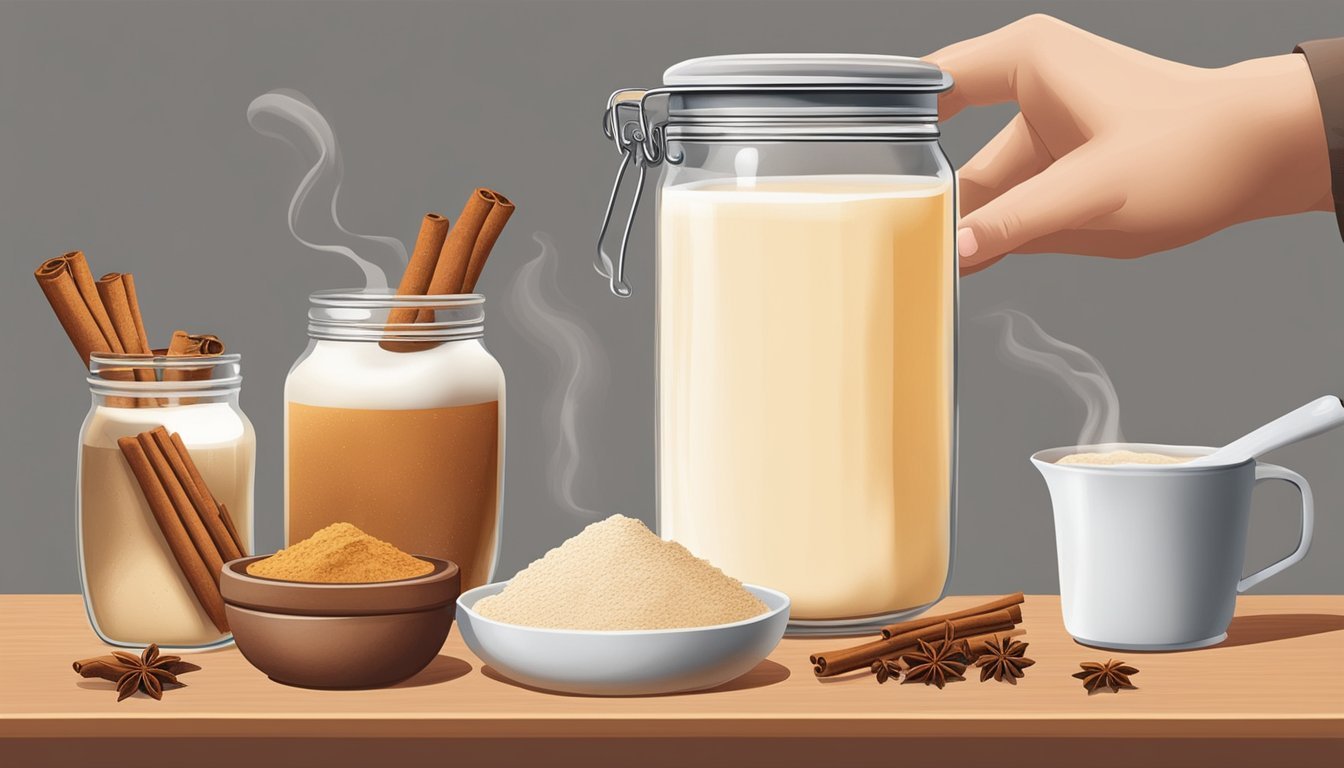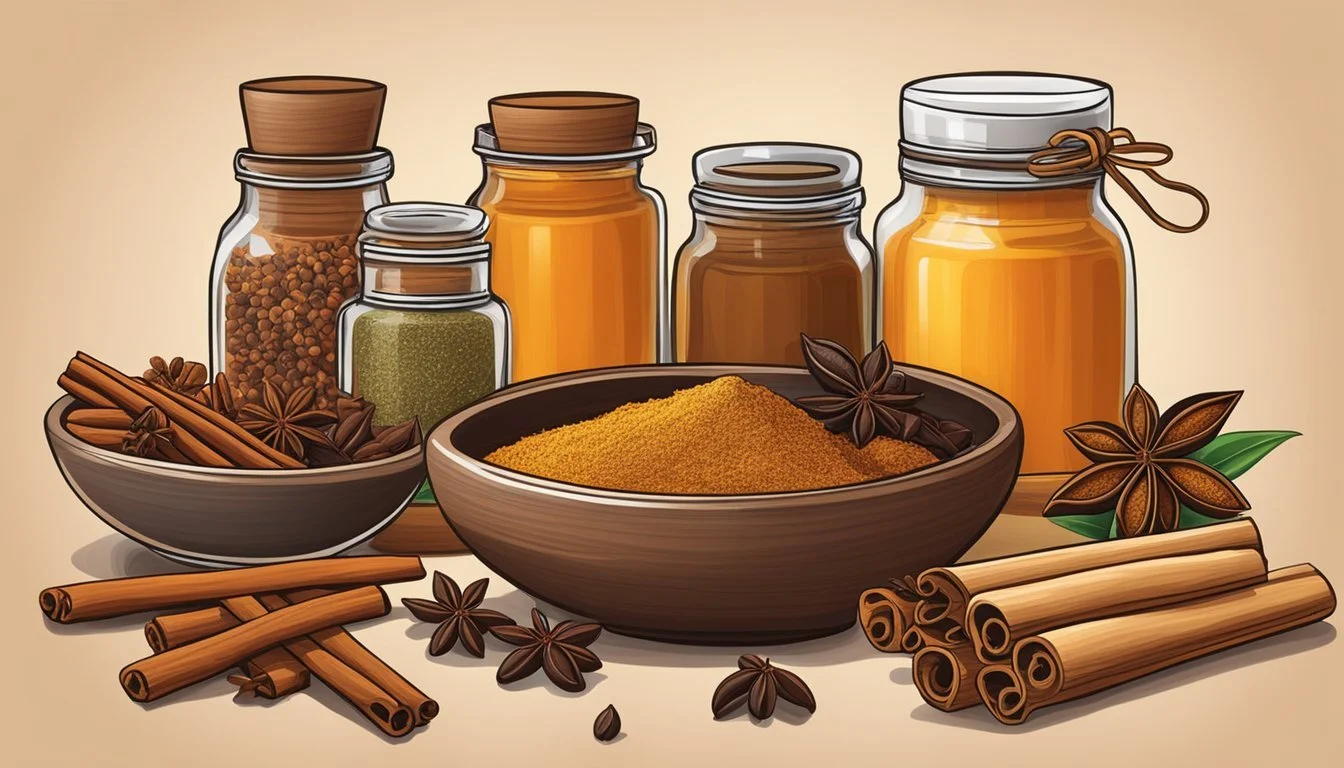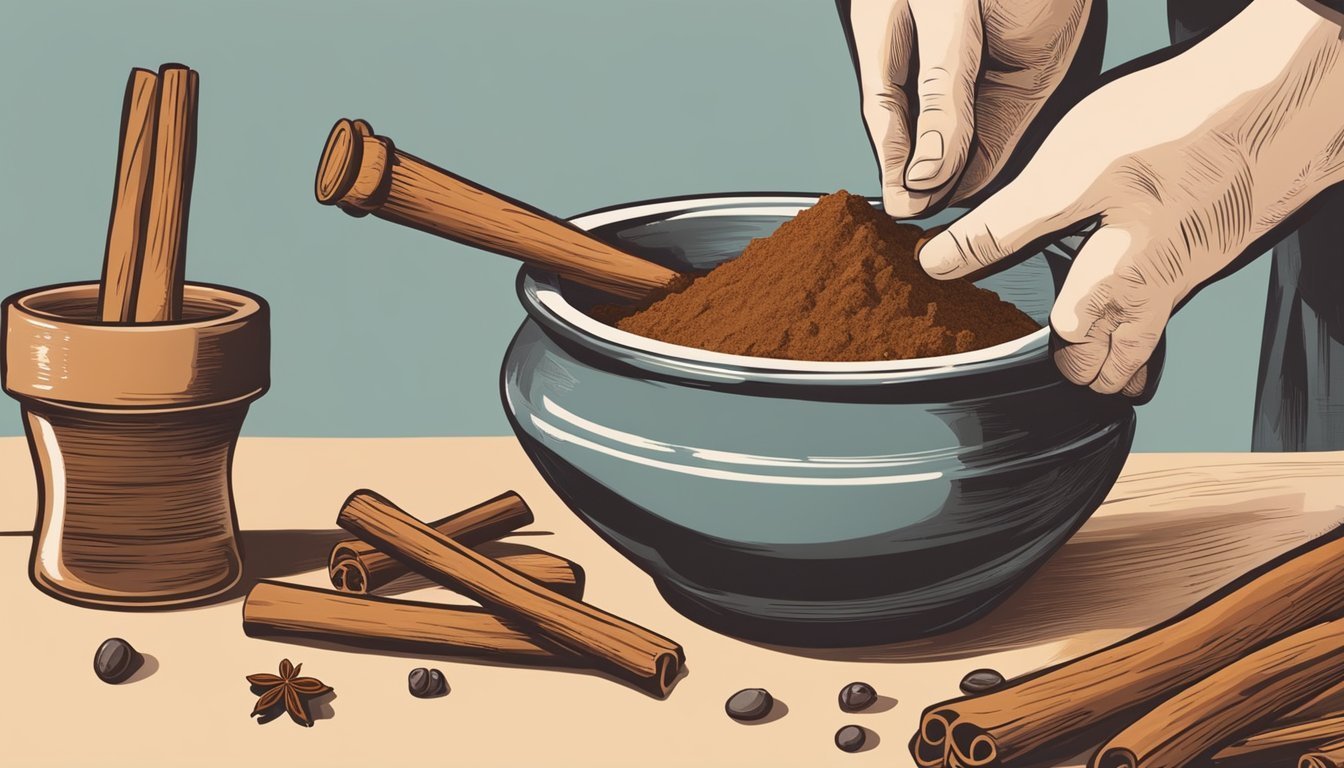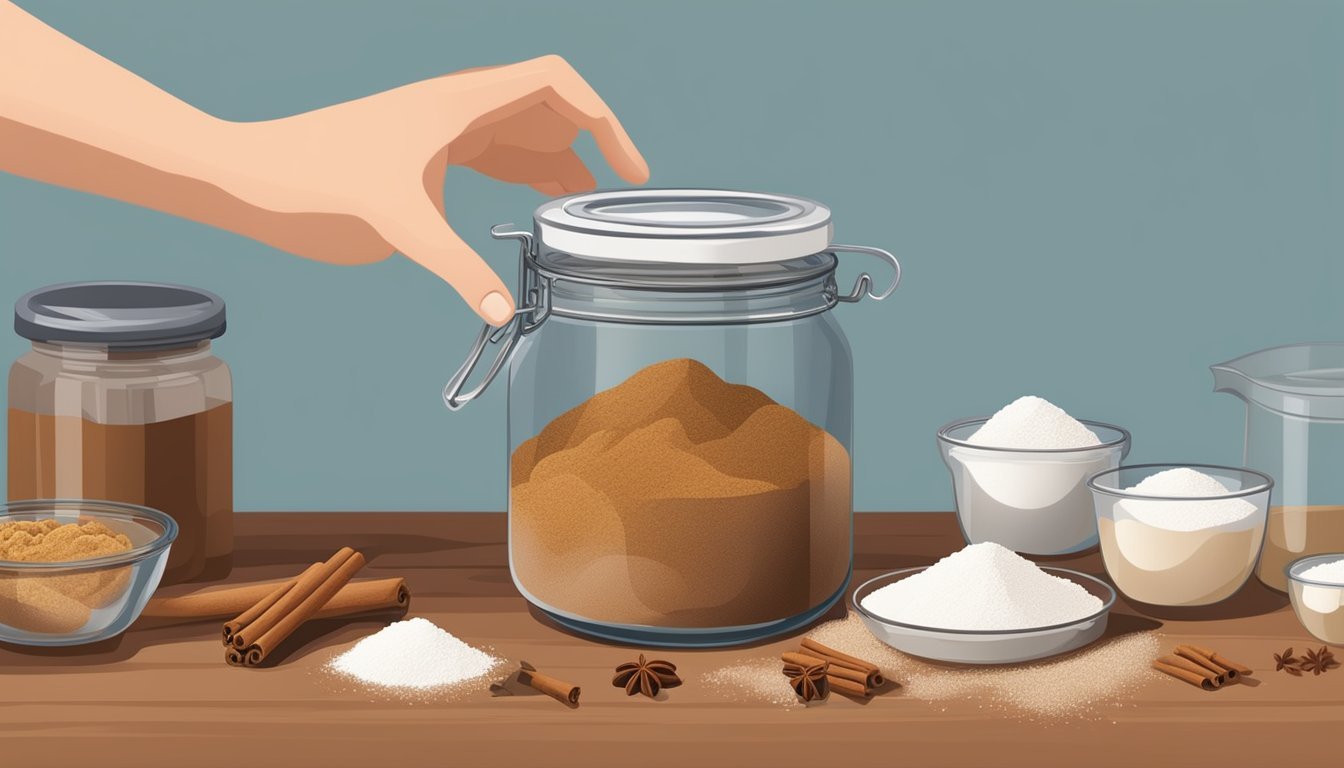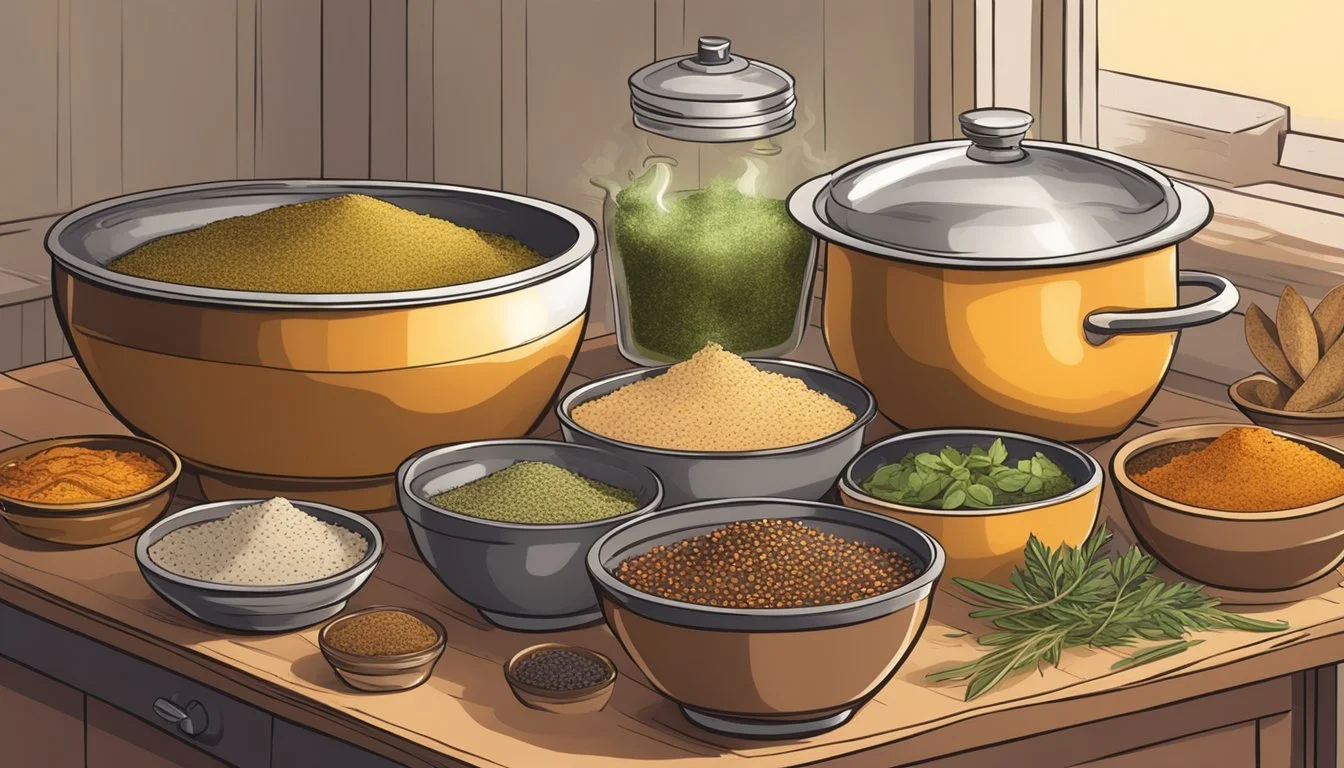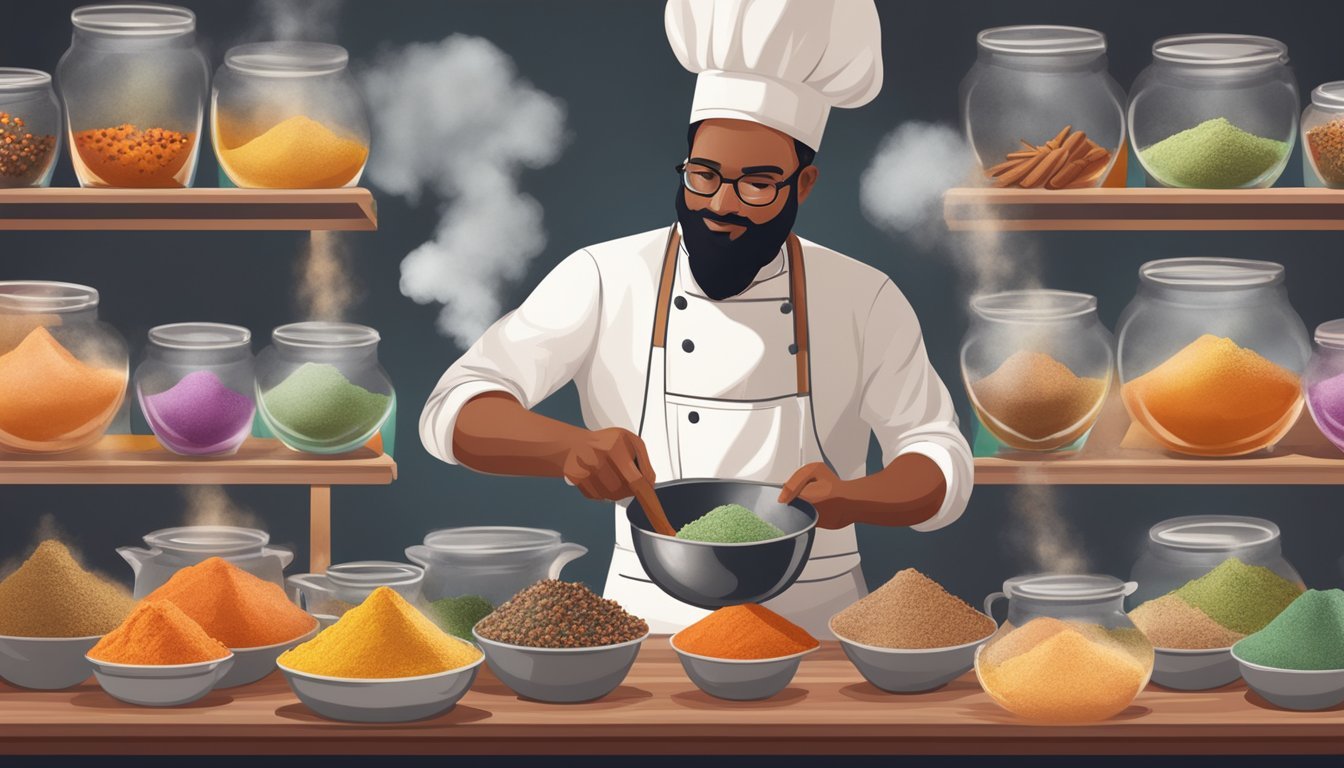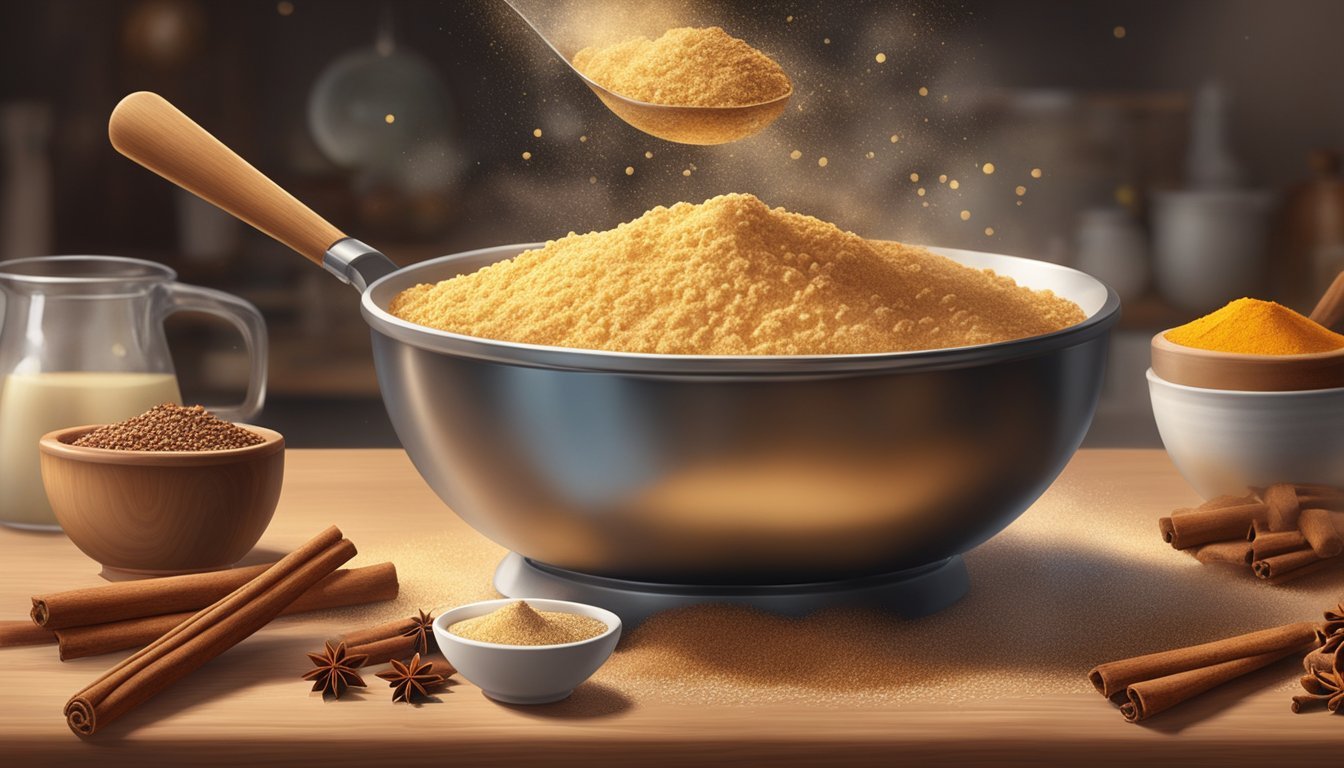Swicy in Baking
Mastering the Art of Spiced Desserts
The culinary landscape is constantly evolving, and the latest wave to hit the market is the "swicy" phenomenon—an innovative fusion of sweet and spicy flavors. According to the latest industry insights, this trend has seen a remarkable increase in popularity, with market research firm Datassential reporting a 38% increase in the appearance of swicy flavors on menus. The rising demand for these complex flavor profiles is reshaping industries, from hospitality to baking, as consumers seek novel taste experiences.
In the world of baking, the infusion of swicy flavors is an exciting development that's challenging traditional perceptions of desserts. These bold combinations cater to a growing number of taste adventurers who show enthusiasm for complex and layered flavor experiences. Market research indicates that a significant portion of Americans are keen on exploring this taste fusion, suggesting that the trend is poised to influence dessert menus and bakery offerings in the years to come.
As the industry takes note of these shifting preferences, bakers are crafting creative recipes that seamlessly blend spices with sweet foundations. The result: a delectable array of baked goods that satisfy the craving for something uniquely swicy. Whether it’s the introduction of hot honey accents or the clever spice infusions in classic confectioneries, these innovative recipes are setting the tone for a new chapter in the baking industry—one that equally prioritizes innovation and the indulgence of consumers' palates.
The Fundamentals of Swicy Baking
Swicy baking is an innovating approach combining the fiery kick of spices with the comforting sweetness of traditional desserts. It's about crafting a harmonious blend of flavors that excites the taste buds without being overpowering.
Understanding Swicy: A Blend of Sweet and Spicy
Flavor: In the realm of swicy baking, flavor is the cornerstone. It involves a strategic selection of spices that bring heat, such as cayenne or ginger, paired meticulously with ingredients known for their natural sweetness, like chocolate or fruits. The goal is to achieve a balance where the sweetness enhances the complexity of the spices, and in turn, the spices add depth and dimension to the sweetness.
Sweet: Swicy recipes often begin with sweet components that set the stage for a comforting dessert experience. Whether it's the use of sugar, honey, or the inherent sweetness of certain fruits or vegetables, these elements provide a familiar base that prepares the palate for the spicy surprise.
Spicy: The spicy aspect is what sets swicy baking apart. This unique heat can come from a variety of spices: a pinch of black pepper, a dash of cinnamon, or the subtle burn of nutmeg. The intensity of the spice is carefully modulated to ensure it complements rather than competes with the sweet profile.
Taste Buds: The art of swicy baking caters to a broad range of taste buds, aiming to stimulate them with a fiery sensation that remains pleasant. It's a culinary dance between the zing of spiciness and the soothing effect of sweet treats.
In practice, some classic combinations might include:
Chocolate with a hint of chili powder
Vanilla cake infused with cardamom and cloves
Pumpkin pie with a ginger-spiced crust
The experience of eating a swicy baked good should leave the individual with a sense of intrigue and satisfaction, as the harmonious blend ensures no single flavor is overpowering. It is a testament to the innovation and creativity found within the world of culinary arts, delivering an appealing contrast that redefines what comforting sweets can be.
Essential Spices for Swicy Treats
Infusing spices into sweet treats harmoniously blends warmth and piquancy, enhancing flavors and creating the trending 'swicy' profile in baked goods.
Cinnamon: The Quintessential Spice
Cinnamon is fundamental in swicy baking. With its warm and comforting aroma, it augments the flavors of pies and cookies.
Ginger: Adding a Fiery Kick
The sharp, distinctive taste of ginger imparts a lively bite to desserts, making it invaluable for those seeking to add a spicy highlight.
Cardamom and Cloves: Creating Complexity
Cardamom and cloves contribute layers of intense flavors, making complex and aromatic profiles in baked delicacies.
Nutmeg and Vanilla: Aromatic Favorites
The rich and sweet undertones of nutmeg and vanilla are adored for their ability to impart fragrant nuances to an array of treats.
Ancho Chile Powder and Black Pepper: Bold Choices
For adventurous palates, ancho chile powder and ground black pepper introduce a smoky and daring edge that can elevate traditional sweets.
Exotic Saffron and Rosemary: A Luxury Twist
Saffron with its unique hue and delicate taste, along with the evergreen zest of rosemary, can transform confections into luxurious creations.
Blended Spices: Pumpkin Pie and Apple Pie Spice
Blends like pumpkin pie spice and apple pie spice streamline the swicy baking process, bundling a multitude of flavors in one convenient mix.
Incorporating Spices into Recipes
The artistry of baking melds with the science of cooking when one incorporates spices into sweet treats, enriching everything from cookies and brownies to custards and pies with enhanced flavors.
Techniques for Infusing Spices into Desserts
Infusing spices into desserts is a thoughtful process that can be executed through various techniques. A common method is incorporating ground spices directly into the dough or batter, ensuring a uniform distribution of flavor. For example, spices like cinnamon can be added to cookie dough or brownie mix. Another technique is creating spice-infused sugars or syrups which can be used to sweeten and flavor desserts simultaneously. Bakers can steep whole spices in melted butter or warm liquids to create infused butters or flavorful bases for pastries and custards.
Balancing Spice and Sweetness
When preparing swicy desserts, achieving the perfect harmony between spice and sweetness is crucial. It's recommended to start with a small amount of spice and adjust according to taste; typically 1/4 to 1/2 teaspoon of spice per cup of flour in the recipe is sufficient. Balancing flavors requires careful measurement, as spices should complement other elements without overwhelming them. For a nuanced taste, pairing complementary spices and sugars can be the key—for instance, cinnamon often pairs well with brown sugar, enhancing the warmth and depth of desserts like pound cake.
Recipe Adaptations for Swicy Desserts
Adapting recipes to incorporate swicy elements may require experimentation, as every dessert responds differently to the addition of spices. For spice cookies, it might be beneficial to add ground ginger or nutmeg to the cookie dough. When adapting a recipe for a pound cake, folding in a spice blend that includes ground cardamom could elevate the flavor. The technique of steeping spices in liquids can also be employed in desserts like custard, where the spice's essence is absorbed throughout the cooking process. By considering the end goal—a balanced and flavorful dessert—bakers can adjust traditional recipes to introduce an invitingly swicy element to their baked goods.
Tools and Techniques
In the art of baking, precisely grounding, toasting, and storing spices are foundational skills that elevate the flavor of sweet treats. The tools and techniques employed in these processes are critical for achieving the desired aromatic intensity and depth of flavor in baking.
Using Mortar and Pestle for Freshly Ground Spices
A mortar and pestle allow for the manual grinding of spices, offering bakers control over texture. This age-old method releases the essential oils and full spectrum of flavor from whole spices like cinnamon sticks or clove buds.
Advantages:
Custom Texture: Achieve a fine powder or a coarser grind based on the need of the recipe.
Maximum Freshness: Ground spices on demand for optimal freshness.
The Role of Spice Grinders
An electric spice grinder simplifies the preparation process by quickly grinding large volumes. It is ideal for hard spices that require a consistent, fine powder, essential for even distribution in baked goods.
Key Uses:
Speed and Efficiency: Grind spices swiftly for immediate use.
Uniformity: Get a homogeneous grind for even flavor in all bites.
Skillet Toasting for Enhanced Flavor
Toasting spices in a skillet can dramatically enhance their flavor profiles. The dry heat of a skillet helps to unlock the aromas and oils in spices such as peppercorns or coriander seeds.
Toasting Procedure:
Moderate Heat: Apply moderate heat to avoid burning.
Constant Movement: Keep spices moving for an even toast.
Airtight Containers for Spice Storage
Proper storage is essential to retain the potency of spices. Airtight containers preserve the integrity of flavors by protecting spices from moisture, light, and fluctuating temperatures.
Storage Tips:
Darkness: Store away from direct sunlight.
Seal: Ensure a tight seal to block out air and moisture.
Sensory Experience and Creativity
The interplay between sweet and spicy elements in baking can transform traditional treats into captivating experiences. This sensory alchemy not only tantalizes the palate but also unleashes the baker's creativity, leading to deliciously unexpected flavor combinations.
Creating a Symphony of Flavors
Sweet and spicy flavors, when expertly combined, create a symphony in baked goods. These swicy notes, such as the incorporation of cinnamon or nutmeg, can elevate even the simplest of sweets. The key is balance; spices should accentuate the sweetness, not overpower it.
Key Spices for Swicy Treats:
Cinnamon
Nutmeg
Ginger
Each spice offers a unique profile, contributing warmth and depth—transforming a conventional dessert into something truly special.
Enhancing Comfort Foods with a Swicy Twist
Classic comfort foods, often characterized by their rich and sweet profiles, can be enlivened with a spicy twist. A dash of pepper or clove might be just what a traditional chocolate cake needs to become a new staple at the dessert table.
Comfort Foods with a Twist:
Chocolate cake with a hint of chili
Apple pie with a sprinkle of cloves and black pepper
Brownies infused with ginger
These additions introduce an adventurous edge to familiar favorites, making them ideal for those looking to explore beyond the ordinary.
Adventurous Combinations for the Bold Palate
For those seeking an adventurous approach, pairing bold spices with sweet bases can lead to incredibly tantalizing creations. Think beyond the usual and experiment with turmeric in carrot cake or black pepper in strawberry jam.
Carrot cake with turmeric
Strawberry jam with cracked black pepper
Lemon cookies with basil and a pinch of cayenne
Embracing swicy combinations encourages bakers to push the boundaries of traditional sweets, crafting treats that are as delicious as they are daring.
Pairings and Applications
Incorporating spices into sweet confections transcends traditional baking, allowing for innovative combinations in beverages and confectionery. This section explores how to pair spices with various sweet applications, enhancing flavors in teas, cocktails, chocolates, and baked goods.
Swicy Beverage Innovations: Tea and Cocktails
Tea: Embracing the "swicy" trend, one might infuse black or green tea with cinnamon and cardamom to add a warming sensation. This combination pairs well with honey for a soothing hot beverage.
Cocktails: Bold spices like ginger or nutmeg can transform an ordinary cocktail into a memorable, swicy experience. Bartenders often incorporate these spices into autumnal cocktails, such as spiced rum punches or cinnamon-infused old-fashioneds.
Swicy Chocolate Delights
Truffles (What wine goes well with truffles?): The addition of ginger or cayenne to chocolate truffles creates an exquisite taste teetering on the edge of sweetness and spice.
Tables for Pairing Spices with Chocolate Treats:
Spice Chocolate Type Ideal Confection Cinnamon Milk Chocolate Chocolate Bark Cardamom Dark Chocolate Ganache-filled Bonbons Cayenne Pepper Dark Chocolate Spiced Chocolate Bars
Baked Goods: Cookies, Brownies, and Shortbread
Cookies: Integrating cinnamon or allspice into sugar cookie recipes enhances flavor depth, while maintaining the classic texture loved by many.
Brownies: A hint of chili powder elevates traditional brownies, offering a complex flavor profile that cuts through the richness of the chocolate.
Shortbread: Pairing coriander with buttery shortbread dough results in a subtle, citrusy note that complements its simplicity.
Baked Good Recommended Spice Suggested Quantity Cookies Nutmeg 1/4 teaspoon per cup of flour Brownies Chili Powder 1/2 teaspoon for a standard batch Shortbread Coriander Seeds 1/3 teaspoon ground into the dough
Health Benefits and Considerations
In the realm of baking, spices are not only cherished for their flavors but also for the potential health benefits they may offer. Certain spices are rich in antioxidants and can positively influence diets, especially for individuals with diabetes.
Antioxidants and Anti-inflammatory Properties
Spices like cinnamon, cloves, and ginger are packed with antioxidants which help to combat oxidative stress in the body. The natural anti-inflammatory properties found in these spices contribute to reducing inflammation at a cellular level. Regular incorporation of these fragrant spices into sweet treats can provide health benefits while enhancing the flavor profile of baked goods.
Cinnamon: Contains cinnamaldehyde, which has antioxidant and anti-inflammatory effects.
Cloves: Rich in eugenol, which is known for its strong antioxidant properties.
Ginger: Offers gingerol, a component praised for its anti-inflammatory benefits.
Sweet Spice Management in Diabetic Diets
For individuals managing diabetes, balancing the use of sweet spices is crucial. Some spices, when used appropriately, may improve insulin sensitivity, helping to regulate blood sugar levels. However, those living with diabetes need to be mindful of portion sizes and the overall sugar content in spiced desserts.
Insulin Sensitivity: A moderate intake of particular spices like cinnamon has been linked to improved insulin sensitivity.
Diabetes Management: Utilize spices to enhance sweetness without an excessive reliance on sugars, which must be carefully monitored by individuals with diabetes.
By understanding the health implications and appropriate culinary applications, spices can enrich the diet responsibly and deliciously.
Storing and Handling Spices
Proper storage and handling are essential to maintain the potent flavors spices impart in baking. Spices should be kept in a cool, dark place to preserve their fragrance and taste. A pantry or cabinet away from heat sources like ovens or stoves is ideal.
Pungent and savory spices, which are prone to losing their potency quicker, require careful handling. They should be stored in airtight containers to extend their shelf life. Glass jars with tight-fitting lids are preferred as they do not retain odors and make it easy to identify the spice inside.
The storage environment must be kept dry, as humidity can lead to clumping and accelerate spoilage. For spices used frequently in culinary applications, one might prefer to keep small amounts within easy reach in a spice rack, ensuring that the main supply remains undisturbed and protected.
When handling spices, one should use clean, dry utensils to measure them out. This prevents the introduction of moisture, which can lead to bacterial growth and reduced quality. Additionally, regularly check for signs of spoilage, such as changes in color, texture, or smell. Below is a summary table for reference:
Action Reason Store in cool, dark place Prevents loss of flavor and color Use airtight containers Keeps spices dry and preserves potency Avoid humidity Prevents clumping and spoilage Handle with dry utensils Maintains quality and longevity
It's advantageous to buy spices in amounts one will use within six months to a year, ensuring flavors remain fragrant and savory flavors are at their peak for baking applications.
Swicy Trend in the Market
The swicy trend, combining sweet with spicy, is revolutionizing taste preferences and market offerings. This section explores how this trend is being reflected in consumer behavior, social media influence, and the hospitality industry.
Consumer Trends and Market Research
Market research indicates a significant increase in the presence of swicy flavors within the food industry. According to recent data from market research firms, there is a 38% rise in menu items that feature sweet and spicy combinations, exemplifying the trend's growing popularity. Consumers are embracing this trend, with a notable two-thirds indicating an interest in sweet and spicy sauces. Additionally, research from Kalsec suggests that three out of four consumers appreciate some level of spice in their foods, an increase from past years.
Influence of Social Media Platforms
Platforms like TikTok have played a pivotal role in popularizing the swicy trend. Food influencers and culinary enthusiasts often share recipes and video content showcasing the innovative incorporation of spices into traditional sweet treats, introducing these flavor pairings to a broader audience. The visual and viral nature of these platforms facilitates rapid dissemination of swicy-inspired culinary creations.
Swicy in the Hospitality Industry
The hospitality industry has quickly adapted to this rising demand, with restaurants and patisseries incorporating swicy elements into their offerings. The trend is not limited to savory dishes; it extends to desserts and confections, creating a buzz among foodservice operators. This integration of swicy flavors reflects an innovative approach to menu development and taps into the adventurous palates of diners seeking new and exciting taste experiences.
Conclusion
Swicy—the blend of sweet and spicy—is a trend taking the culinary world by storm, particularly in the realm of baking. Infusing spices into sweet treats not only expands the flavor palette but also encourages creativity in the kitchen. Bakers can confidently experiment with a variety of spices, discovering new flavor profiles that intrigue and delight.
They may start with ginger, a spice that adds a zesty kick to cookies and cakes, or venture into the depth provided by cloves, introducing a warm complexity to desserts. Spices like ground cardamom and mace offer distinctive notes that can transform a simple dish into an exotic experience.
Swicy desserts stand out not just for their flavor but also for the boldness they represent in culinary craftsmanship. By daring to merge the heat of spices with sweetness, bakers create unique experiences that are as much about sensation as they are about taste.
Spice Suggested Use Ginger Gingerbread, Cakes Clove Custards, Infused Sugars Cardamom Muffins, Scones Mace Cookies, Pastries
In the current culinary landscape where diners seek thrilling new tastes and experiences, the swicy approach in the baking arena stands as a testament to the dynamic and evolving nature of food artistry.

